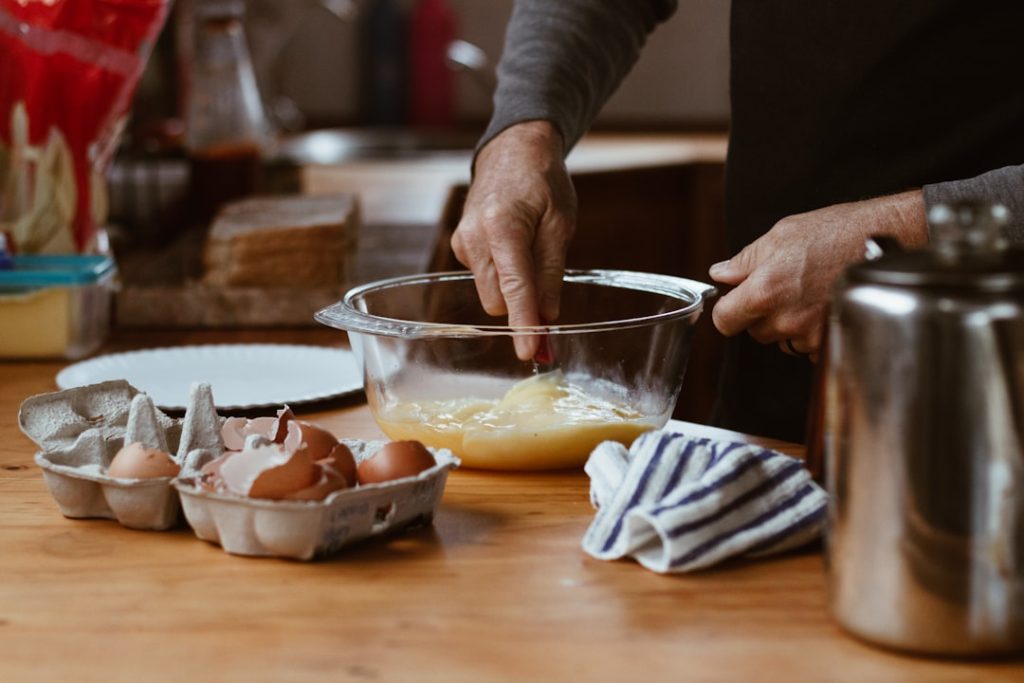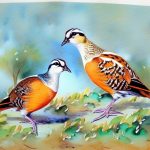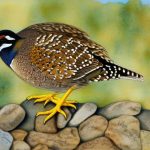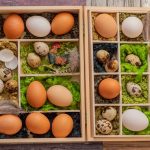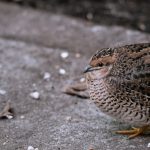King quails, also known as button quails, are small, ground-dwelling birds that are native to Australia and surrounding regions. They are popular among aviculturists for their colorful plumage and interesting behaviors. Breeding king quails can be a rewarding experience for bird enthusiasts, as it allows them to observe the entire life cycle of these fascinating birds. In this article, we will explore the various aspects of king quail breeding, from selecting breeding stock to caring for chicks. By understanding the intricacies of king quail breeding, enthusiasts can successfully raise healthy and thriving quail populations.
Table of Contents
- 1 Selecting Breeding Stock
- 2 Creating the Ideal Breeding Environment
- 3 Understanding Breeding Behavior
- 4 Incubating and Hatching Eggs
- 5 Caring for Chicks
- 6 Tips for Successful King Quail Breeding
- 7 FAQs
- 7.1 What is the breeding season for king quail?
- 7.2 How do king quail build their nests?
- 7.3 How many eggs do king quail lay?
- 7.4 How long does it take for king quail eggs to hatch?
- 7.5 What is the best way to care for king quail chicks?
- 7.6 At what age do king quail reach sexual maturity?
- 7.7 What are some common health issues that can affect king quail during breeding?
Key Takeaways
- King quail breeding can be a rewarding hobby and can be done with minimal space and resources.
- Select breeding stock that is healthy, active, and free from deformities or diseases.
- Create an ideal breeding environment with proper lighting, temperature, and nesting materials.
- Understand the breeding behavior of king quails, including courtship displays and mating rituals.
- When incubating and hatching eggs, maintain proper humidity and temperature levels for successful hatching.
- Care for chicks by providing a balanced diet, warmth, and a clean environment.
- Successful king quail breeding requires patience, observation, and attention to detail.
Selecting Breeding Stock
Selecting the right breeding stock is crucial for successful king quail breeding. When choosing breeding birds, it is important to select healthy, disease-free individuals with strong genetic traits. Look for birds that are active, alert, and have bright, vibrant plumage. Avoid birds that show signs of illness or have any physical deformities. It is also important to consider the age of the birds – mature adults are more likely to produce healthy offspring. Additionally, it is recommended to avoid inbreeding by introducing new bloodlines into your breeding stock periodically. By carefully selecting breeding stock, you can ensure the health and vitality of your king quail population.
In addition to physical traits, it is also important to consider the behavioral characteristics of potential breeding birds. Observing the birds’ interactions and behaviors can give you valuable insights into their compatibility as breeding pairs. Look for birds that engage in courtship behaviors, such as calling, displaying, and preening each other. These behaviors indicate that the birds are forming strong pair bonds, which is essential for successful breeding. By selecting breeding stock based on both physical and behavioral traits, you can increase the likelihood of producing healthy and genetically diverse offspring.
Creating the Ideal Breeding Environment
Creating the ideal breeding environment is essential for encouraging king quails to breed successfully. In their natural habitat, king quails inhabit grasslands and open woodlands, so it is important to replicate these conditions in captivity. Provide a spacious aviary with plenty of ground cover, such as grass or leaf litter, where the birds can forage and build nests. It is also important to include hiding spots and sheltered areas where the birds can retreat to feel safe and secure. Additionally, ensure that the aviary is well-ventilated and receives plenty of natural light, as these environmental factors can influence the birds’ breeding behavior.
In addition to the physical environment, it is important to provide a nutritious and varied diet for breeding king quails. A diet consisting of high-quality seeds, grains, insects, and fresh greens will provide the essential nutrients needed for breeding birds. It is also important to provide access to calcium supplements, such as crushed oyster shell or cuttlebone, to support egg production and shell formation. By creating a naturalistic and nourishing environment for your king quails, you can encourage them to exhibit their natural breeding behaviors and increase the likelihood of successful breeding.
Understanding Breeding Behavior
Understanding the breeding behavior of king quails is essential for creating an environment that encourages successful reproduction. In the wild, king quails are monogamous and form strong pair bonds with their mates. When kept in captivity, they will often display courtship behaviors such as calling, displaying, and preening each other. These behaviors indicate that the birds are forming pair bonds and are preparing to breed. It is important to observe these behaviors and provide a suitable nesting area where the female can lay her eggs and incubate them.
Once a pair of king quails has formed a strong bond and is ready to breed, the male will often perform a courtship display to attract the female’s attention. This display may involve puffing up his feathers, bobbing his head, and making soft cooing sounds. If the female is receptive, she will respond by crouching down and allowing the male to mount her for mating. After mating has occurred, the female will seek out a suitable nesting site where she will lay her eggs. By understanding these courtship and mating behaviors, breeders can provide the necessary conditions for successful breeding and egg-laying.
Incubating and Hatching Eggs
Once the female king quail has laid her eggs, it is important to provide the proper conditions for incubation and hatching. King quail eggs typically take around 16-18 days to hatch, so it is important to ensure that the eggs are kept in a warm and humid environment during this time. You can use an incubator specifically designed for bird eggs or create a homemade incubator using a heat source and a container with moistened substrate. It is important to monitor the temperature and humidity levels closely to ensure that they remain within the optimal range for egg development.
During the incubation period, it is important to handle the eggs with care and avoid any sudden movements or disturbances that could disrupt the development of the embryos. Candling the eggs with a bright light can help you monitor their progress and identify any potential issues such as infertility or embryo mortality. As the hatching date approaches, it is important to prepare a brooder area where the newly hatched chicks can be kept warm and safe. Providing a heat source such as a heat lamp or heating pad will help the chicks regulate their body temperature and stay healthy during their first few weeks of life.
Caring for Chicks

Caring for newly hatched king quail chicks requires attention to detail and a nurturing approach. Once the chicks have hatched, it is important to ensure that they have access to a warm and safe environment where they can rest and grow. A brooder box with clean bedding material and a heat source will provide the ideal conditions for the chicks’ early development. It is important to monitor the temperature in the brooder box closely and make adjustments as needed to ensure that it remains within the optimal range for young chicks.
In addition to providing a warm environment, it is important to offer a nutritious diet for the growing chicks. A high-quality game bird starter feed or finely ground commercial quail feed can provide the essential nutrients needed for healthy growth and development. It is also important to provide access to clean water at all times to prevent dehydration. As the chicks grow, you can gradually introduce small insects and fresh greens into their diet to provide additional nutrients and encourage natural foraging behaviors.
Tips for Successful King Quail Breeding
Successfully breeding king quails requires attention to detail and a thorough understanding of their natural behaviors and requirements. Here are some additional tips for successful king quail breeding:
1. Monitor breeding pairs closely: Keep a close eye on your breeding pairs and observe their behaviors regularly to ensure that they are forming strong pair bonds and engaging in courtship behaviors.
2. Provide plenty of hiding spots: King quails are naturally shy birds and appreciate having plenty of hiding spots in their environment where they can retreat when they feel stressed or threatened.
3. Avoid overcrowding: Ensure that your aviary is not overcrowded, as this can lead to stress and aggression among the birds, which can negatively impact breeding success.
4. Keep records: Keep detailed records of your breeding pairs, including their lineage, hatch dates, and any notable behaviors or health issues. This information can be valuable for tracking breeding success and identifying potential issues.
5. Seek veterinary care when needed: If you notice any signs of illness or distress in your breeding birds or chicks, seek veterinary care promptly to address any health issues and prevent them from spreading to other birds.
By following these tips and guidelines, aviculturists can increase their chances of successfully breeding king quails and raising healthy offspring. With careful attention to their needs and behaviors, breeders can enjoy the rewarding experience of observing these charming birds thrive in captivity.
If you’re interested in breeding king quail, you may also want to explore the article on “What is the incubation period for goose eggs” on PoultryWizard.com. Understanding the incubation period for different types of eggs can provide valuable insights into the breeding process and help you ensure the best conditions for your quail. Check out the article here to learn more about this important aspect of poultry breeding.
FAQs
What is the breeding season for king quail?
The breeding season for king quail typically occurs during the warmer months, from spring to early autumn.
How do king quail build their nests?
King quail build their nests on the ground, typically using grass, leaves, and other plant materials to create a shallow depression in the soil.
How many eggs do king quail lay?
King quail typically lay between 4 to 12 eggs in a clutch, with an average of 8 eggs per clutch.
How long does it take for king quail eggs to hatch?
King quail eggs usually take around 16 to 18 days to hatch after they have been laid.
What is the best way to care for king quail chicks?
King quail chicks should be provided with a warm, draft-free environment and a diet of small insects, seeds, and commercial game bird starter feed. It is important to ensure that they have access to clean water at all times.
At what age do king quail reach sexual maturity?
King quail typically reach sexual maturity at around 8 to 10 weeks of age.
What are some common health issues that can affect king quail during breeding?
Common health issues that can affect king quail during breeding include respiratory infections, parasites, and egg binding in females. It is important to monitor the health of breeding quail closely and seek veterinary care if any issues arise.
Meet Walter, the feathered-friend fanatic of Florida! Nestled in the sunshine state, Walter struts through life with his feathered companions, clucking his way to happiness. With a coop that’s fancier than a five-star hotel, he’s the Don Juan of the chicken world. When he’s not teaching his hens to do the cha-cha, you’ll find him in a heated debate with his prized rooster, Sir Clucks-a-Lot. Walter’s poultry passion is no yolk; he’s the sunny-side-up guy you never knew you needed in your flock of friends!

